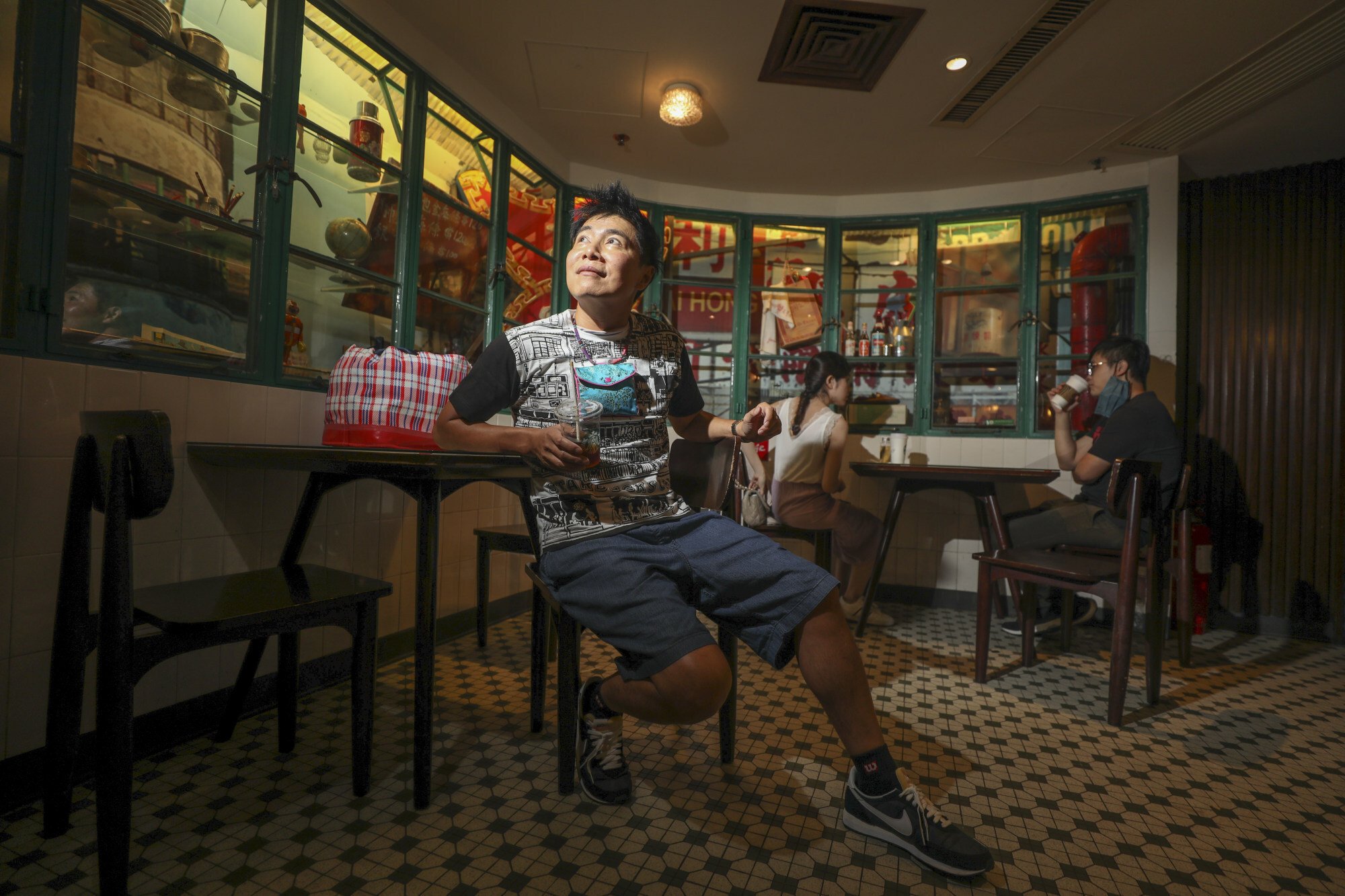
One-of-a-kind Hong Kong Starbucks to close, ‘cheap copies’ a factor, says designer whose at-first-rejected idea took the city by storm
- GOD founder Douglas Young, who designed the ‘bing sutt’-style store in Central, says its opening was a sensation despite the predictions of its operators
- The idea has since been copied to the extent that ‘people can’t tell between the real and the fake any more’, he says
Douglas Young looks around the Starbucks on Duddell Street, in Hong Kong’s Central financial district, and is sad that it will close in mid-October.
While the entrance looks like any other in the American chain, as customers walk further into the coffee shop, it gradually takes them into a time warp full of old-school Hong Kong elements such as neon signs, birdcages, red rooster bowls, spittoons, fly swatters, fans and signage.
“It actually looks better now than in the beginning because it’s been used a bit. When we first did it, it was too new – now it really looks real,” laughs Young, founder of Hong Kong lifestyle brand GOD, who designed the store over a dozen years ago.
Young explains that around 2007, Hong Kong-based F&B chain Maxim’s, which brought Starbucks to the city, contacted GOD about doing something at the “not-so-prime” space located at the top of the stairs on Duddell Street. Maxim’s gave Young free rein to do whatever he wanted.

“At the time, there was a sort of scandal in China that involved Starbucks. It’s not really a scandal, it’s just bad PR [public relations] because they opened a Starbucks in the Forbidden City [in Beijing] and it was just a normal-looking Starbucks, and people were kind of angry that they didn’t respect Chinese culture,” he says.
“Starbucks had this idea that they called ‘extreme localisation’. Up till then, every Starbucks in the world looked exactly the same. So they decided to have some Starbucks in certain cities that respect local culture.” The US company chose to use Hong Kong as a test bed.
What we’ve done here is to start a trend for Hong Kong-style eateries which has been copied everywhere in Hong Kong, and mostly not very [well]
Young came up with the idea of designing the shop as if Starbucks’ then chairman and CEO Howard Schultz was Chinese and had started the chain in Hong Kong in the 1950s – an era in which Hong Kong had a thing for Western-style cafes called bing sutt (literally ‘ice room’) that served coffee and ice cream, which were considered luxuries at the time.
“I remember showing the drawings and materials and the colours, and Maxim’s was really shocked – they weren’t expecting anything like this,” he says. “I guess they were expecting some surface decoration, or maybe some typical GOD prints or cups, so initially they rejected our design.”
Young’s idea somehow made its way to Starbucks’ headquarters in Seattle, where Schultz personally approved it – and so Maxim’s reversed its decision.


“In every big organisation, middle management is conservative and it’s the bosses who are the ones who take risks,” Young says.
When the Duddell Street location opened on June 10, 2009, Young says it was a media sensation that took Maxim’s by surprise. “They expected this to be their worst shop – that’s why we got the chance – and when we opened it became Starbucks [Hong Kong’s] top location, which is crazy.
“When tourists came we had to produce souvenirs for them to buy, like T-shirts, tote bags and plastic cups.”
New Hong Kong restaurant Moxie: plant-based perfection
Hongkongers rented out the space to hold weddings, parties and office events, Young says, and the menu expanded to include coffee-flavoured pineapple buns and egg tarts, and even yin yeung, the Hong Kong-style combination of coffee and tea.
The shop was such a success that someone from a mainland Chinese company came to the location, photographed every inch of it and created a chain of coffee shops in the mainland whose walls were decorated from floor to ceiling with photographs of the Duddell Street store.
“I was told that Maxim’s did try to sue them, but when they realised this company was like 10 times the size of Maxim’s and they offered to buy Maxim’s…” Young says, bursting into laughter. Maxim’s later dropped the idea of litigation.

Young believes the decision by Maxim’s to close the store 12 years after it opened is partly because the idea has been copied by other cafes in Hong Kong.
“What we’ve done here is to start a trend for Hong Kong-style eateries which has been copied everywhere in Hong Kong, and mostly not very [well]. Here we use real fans, windows, we use real material, the little details, but the [other cafes] use really cheap copies, and it is being copied to the extent that people can’t tell between the real and the fake any more, which kills the style and becomes too ubiquitous.”
Asked for confirmation of the store’s closure, Starbucks Hong Kong released a statement, which read in part: “We’ve been proud to operate the unique bing sutt-themed store since 2009, located on Duddell Street in Central. The store was thoughtfully designed to blend the much-loved Hong Kong style from the 1950s through the ’70s, with today’s sensibilities.
“After careful consideration and taking into account a number of operational factors, sadly the store will close its doors permanently in mid-October.”

